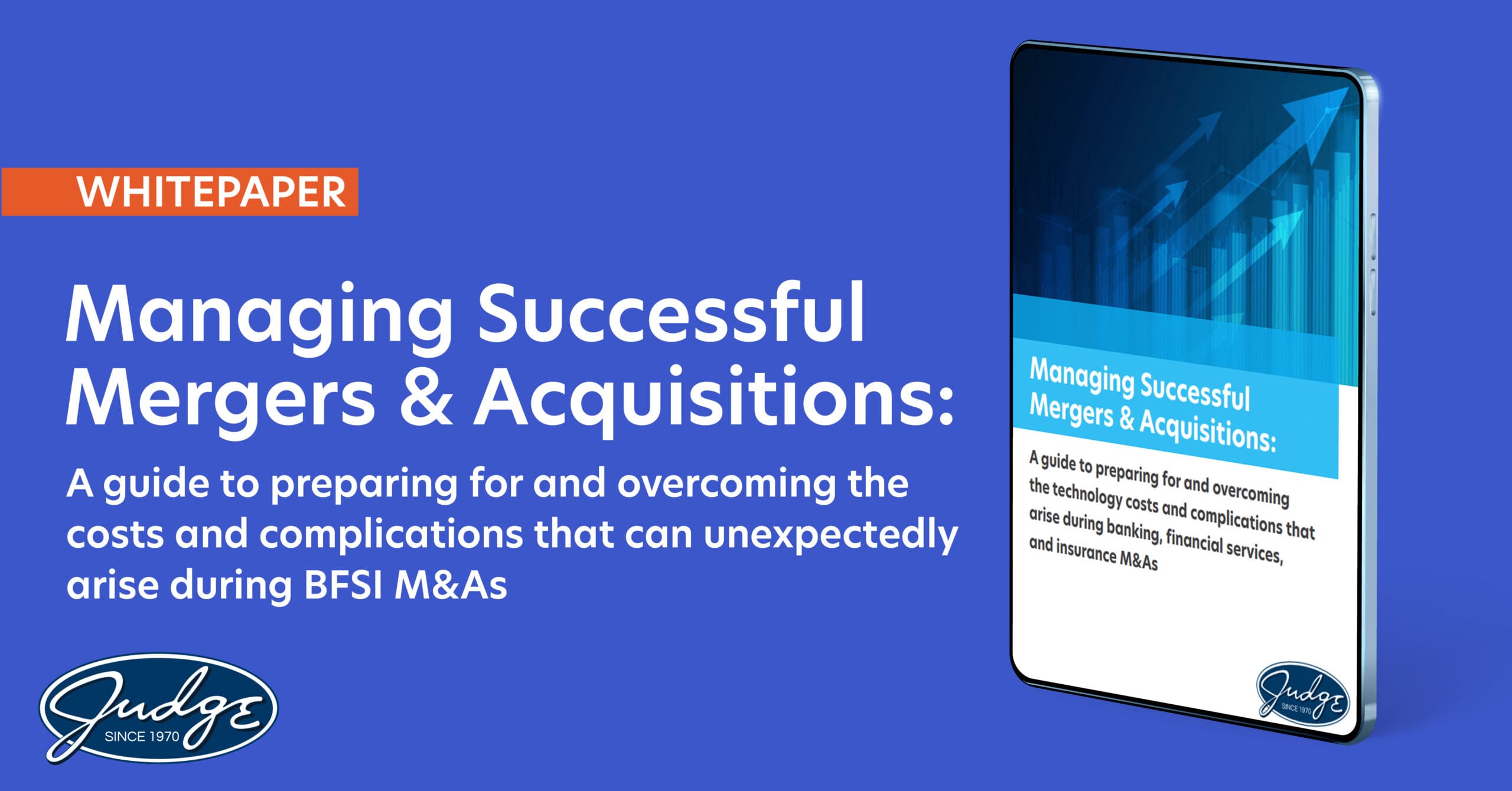Navigating Technology Challenges in Mergers & Acquisitions: A Guide to Success
In today’s rapidly evolving banking and finance industry, technology plays a pivotal role in meeting customer demands and staying competitive. As a result, mergers and acquisitions (M&As) have become a common strategy for traditional lenders to adapt and partner with technology-driven fintech disruptors. However, managing the technology costs and complexities that arise during these M&As is crucial for ensuring a successful transition. In this blog post, we will explore the challenges faced in the banking, financial services, and insurance (BFSI) sectors during M&As and highlight the importance of proactive technology management for a smooth integration. For a complete guide to preparing for and overcoming the technology costs and complications that arise during BFSI M&As, download our whitepaper.
The Impact of Technology on the Industry
The rise of fintech companies has reshaped the banking and finance landscape, offering specialized services and meeting customers’ digital expectations. As a result, traditional lenders are seeking acquisition or partnership opportunities with these fast-growing, technology-forward platforms. In 2021, the financial sector saw significant M&A activity, with a total value of $570 billion. However, the following year, M&A activity experienced a decline of 37%, impacting the banking sector the most. Despite the current market uncertainty, volatility can present unique opportunities for banks and payment processors to capitalize on M&As.
Key Technology Trends in Banking and Finance
To unlock their digital potential, organizations in the banking and finance industry must focus on key technology trends:
- Modernizing Legacy Systems
Upgrading and migrating legacy enterprise systems to the cloud is essential for enabling digital transformation.
- Leveraging Machine Learning (ML)
Utilizing ML technologies helps organizations gain insights, automate decision-making, and uncover patterns or anomalies.
- Data Integration and Accessibility
Connecting legacy data systems and utilizing cloud-based data stores enable real-time, at-scale, and automated decision-making.
- Embracing a Zero-Trust Security Approach
Ensuring customer trust by implementing robust security measures is crucial in today’s digital landscape.
Supporting Successful M&As Through Technology
While M&As hold the promise of revenue growth and scalability, they also present significant technology integration challenges. Studies have shown that most acquisitions fail due to unforeseen complications. To navigate these challenges and ensure a successful M&A, partnering with a holistic managed services provider, like Judge, a global leader in this domain, becomes crucial.
The Strategy for a Successful M&A
To effectively manage an M&A, the buy-side company must develop a strategy that encompasses key steps:
- Understand the acquired company’s business capabilities.
- Visualize the current-state architecture and assess compatibility with existing infrastructure.
- Engage with vendors to seek advice and validate approaches.
- Set budgets and prioritize initiatives for integration or streamlining of processes.
- Define target IT architecture and plan application landscape consolidation.
- Build roadmaps and implementation plans for integration or migration.
- Establish teams to deliver the implementation projects.
- Plan training programs to ensure the adoption of new systems and upskill existing employees.
- Implement success tracking tools to measure adoption, ROI, and progress of the merger.
- Execute post-merger integration and monitor the application portfolio’s progress.
The achieve a successful M&A, the business, IT, and enterprise architecture teams must understand the decisions they need to make, the data needed to inform those decisions, and which tools help analyze and interpret that data.
Navigating Unforeseen Technology Costs and Complications
While M&As offer opportunities for growth, they also pose unexpected costs and complications. Issues such as server capacity, software licensing, specialized staff requirements, and contract terminations can strain the M&A budget. Regardless of a company’s experience or system maturity, unforeseen issues are likely to arise. This is particularly true when acquiring a fintech company.
Prepare for These Technology Costs
- Server capacity/storage solutions
- Software licensing
- Strategy for migrating systems and determining which software or coding language is necessary (incompatible systems will need to be migrated)
- Costs of terminating contracts and agreements early
- Enterprise architecture presents a high risk for cost overruns as infrastructure is usually hit the hardest during an M&A in terms of unforeseen costs (this includes cloud and data storage).
Talent – Critical to M&A Success
In fintech M&As, hiring specialized talent can be expensive and difficult to find. Relying on existing staff can overload them and create issues with maintaining current systems, while taking on full-time staff can bring long-term costs. Staffing agencies provide a cost-effective solution by offering on-demand contractors with the necessary expertise.
The most commonly staffed positions for M&As include:
- Data center staff
- Cloud strategy and operations roles
- Enterprise architects
- Infrastructure developers/engineers
- System engineers (Linux, Python, Java)
- Cloud security engineers (development and administration)
- Cyber security positions
Managed Service Solutions for Fintech M&As
Navigating technology challenges during mergers and acquisitions in the banking, financial services, and insurance industries is crucial for a smooth transition. The Judge Group is a global leader in technology consulting and talent solutions that can help organizations prepare for and overcome technology costs and complications during M&As. Our teams specialize in outcome-based solutions that drive productivity, revenue growth, and scalability, enabling strategic growth through integrated and operationalized M&As. We offer onshore, nearshore, and offshore staffing options, providing access to the best-fit talent for M&A projects.





